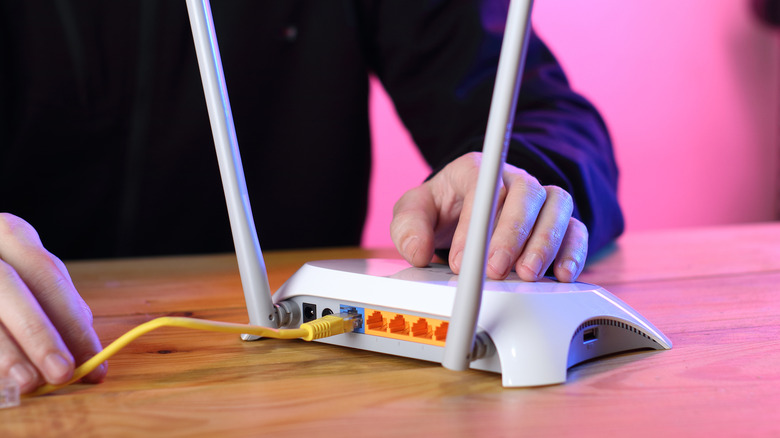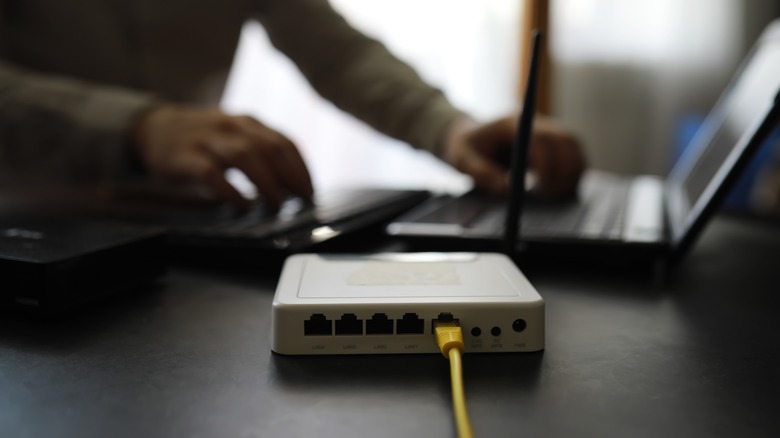What Exactly Does The Reset Button On A Router Do? Here's When To Use It
The thing about routers is that they're mostly a set-and-forget type of device. Once you finish configuring your Wi-Fi and basic settings, you typically won't be touching the router again — unless, of course, it's to fix an internet issue. Because you'll rarely check the device after setup, it's easy to overlook some of its practical physical features.
For one, you're probably not using the USB ports on your router at all. These can come in handy for sharing files, charging small electronics, and even transforming your printer into a wireless model. Then, there's the WPS button that helps quickly connect new devices to the network without needing to enter the password.
Another useful function on your router is the reset button, usually located at the back. The router's reset button permanently deletes your current configurations and returns them to factory defaults. Reset is entirely different from reboot, though. While a reboot only turns your router off and on again, a reset restores the device to its original state before you initially set it up. But why would you even need the reset button, and how do you use it?
When to use the reset button on your router
Restoring your router to its factory settings might not be something you'll need to do every day, but it can actually be a lifesaver in a variety of circumstances. The most common reason why you might need to use the reset button on your router is when you forget the login credentials for the router's app or web-based admin panel. If your router doesn't offer a recovery feature, the only way to regain access to the admin panel is by resetting the router. This lets you use the default username and password typically printed on the back of the device.
You might also want to reset the router if you're connected to Wi-Fi but have no internet access or are experiencing persistent software bugs. A reset is usually the last resort when troubleshooting such issues. If you're giving away your router, returning it, or suspecting that it has been compromised, it's a good idea to reset it too. You'd want to protect your personal data and prevent other people from knowing your previous Wi-Fi settings and network activity.
You can use the reset button on your router when you simply want a clean slate. Say you'd like to change the Wi-Fi name and password, set up a new guest network, and assign different static IP addresses to your devices. Instead of undoing everything one at a time, just reset the router to wipe all your personalized configurations.
How to use your router's reset button
It's easy to use the reset button on your router. For most major wireless router brands, you just need to hold down the button for about 30 seconds until you see the LED indicators blink or turn off. Some routers, like the TP-Link, Starlink, and NETGEAR, have a reset hole instead of a button, so you can't readily push it with your finger. Use a slim needle-shaped tool like a paper clip or SIM card ejector to press and hold the button.
Once you've successfully reset your router, you'll need to set it up again. Take note that you'll be starting from scratch, so if you want to keep your old settings, make sure to write them down or back up your configuration if your router comes with such a feature. To set up your router, simply sign in to the admin panel, configure the Wi-Fi name and password, and then reconnect your devices to the network.


